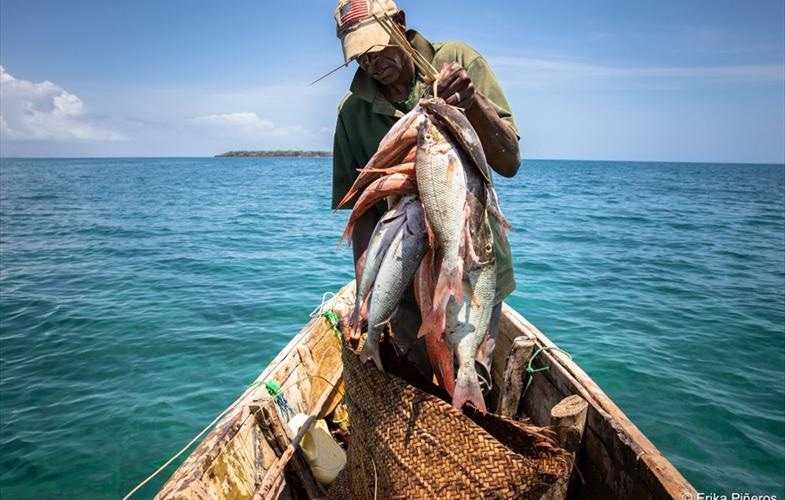May 5 2021
A strong and sustainable study performed by the Wildlife Conservation Society (WCS) offers scientific evidence for universal calls for preserving 30% of the world’s ocean.
 No-take marine protected areas (MPAs) increased the growth of fish populations by 42 percent when fishing was unsustainable in surrounding areas. Image Credit: © Erika Piñeros, for Wildlife Conservation Society.
No-take marine protected areas (MPAs) increased the growth of fish populations by 42 percent when fishing was unsustainable in surrounding areas. Image Credit: © Erika Piñeros, for Wildlife Conservation Society.
The analyzed no-take marine protected areas (MPAs) elevated the growth of fish populations by 42% when fishing was considered to be unsustainable in surrounding regions, thereby gaining the advantages of steady and high production of fish populations for fishers, while safeguarding endangered ecosystems.
The study registered fish catches for 24 years over a dozen fish landing sites inside two counties in Kenya, which enabled researchers to assess the lasting effects of two distinct fisheries management techniques. One county made use of the no-take MPA covering 30% of the fishery, while the other concentrated on gear restrictions and forbade the use of small-mesh nets.
The variations in the results for the ecosystems and the fishers were high. Per-person day-to-day catches rose 25 times quicker next to the no-take MPA compared to fished areas with gear restrictions, which shows that no-take MPAs were a lot more effective at maintaining stocks of fish compared to limiting destructive gear.
The no-take area in Mombasa occupied 30 percent of the studied fishing grounds. Fortuitously, this is the target for protection being proposed for the oceans, which is rarely tested and based on the results of simulation models.
Dr Tim McClanahan, Study Lead Author and Senior Coral Reef Scientist, Wildlife Conservation Society
“The empirical support for the models and the conservation proposal is reassuring along with the unexpected results of increased production of fish populations that compensated for the lost fishing area. This adds to the evidence that no-take protected areas of sufficient coverage may compensate for the lost fishing grounds, particularly when fisheries are not sustainably fished,” added McClanahan.
This latest study from WCS constitutes the longest ever, constant elaborate fish catch record for coral reefs and displays patterns that took almost two decades to open as a result of the small yearly increments of change.
For a long time, the time and resources required to finish such empirical studies have been a hindrance to testing the effectiveness of no-take MPAs on fisheries and are also the reason why simulation models were generally used.
Until this study was published, the majority of the present empirical studies were short-lived and concentrated on the catch for each fisher instead of the catch per area, which is a crucial metric of lasting yield estimates. As a result, there is a forceful need to extend lasting studies to calibrate in an improved way and test fisheries production models.
This study demonstrates that MPAs, where no-take rules are pursued, can redress for lost fishing grounds and stocks and thus help people to be highly dependent on fish for the source of income and nutritional security that is gone when catches are not lasting.
Although gear restrictions had positive advantages for only a short span of time, they did not improve the production of fisheries over the long term. Hence, a few combinations of closure and gear restrictions are probably required to reach the complete benefits to both ecosystems and fishers.
The study was guided by WCS Senior Conservation Scientist Tim McClanahan. The work was financially supported by Bloomberg Philanthropies, The Tiffany & Co. Foundation, and the John D. and Catherine T. MacArthur Foundation.
Journal Reference:
McClanahan, T. R., (2021) Marine reserve more sustainable than gear restriction in maintaining long-term coral reef fisheries yields. Marine Policy. doi.org/10.1016/j.marpol.2021.104478.